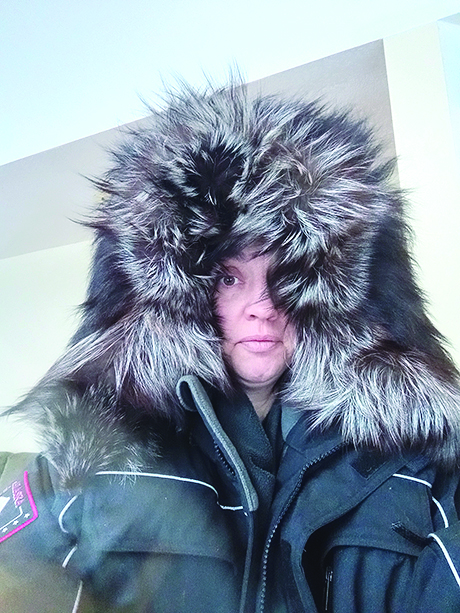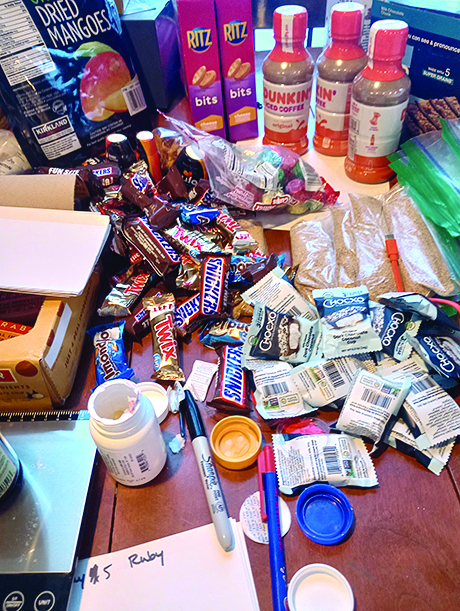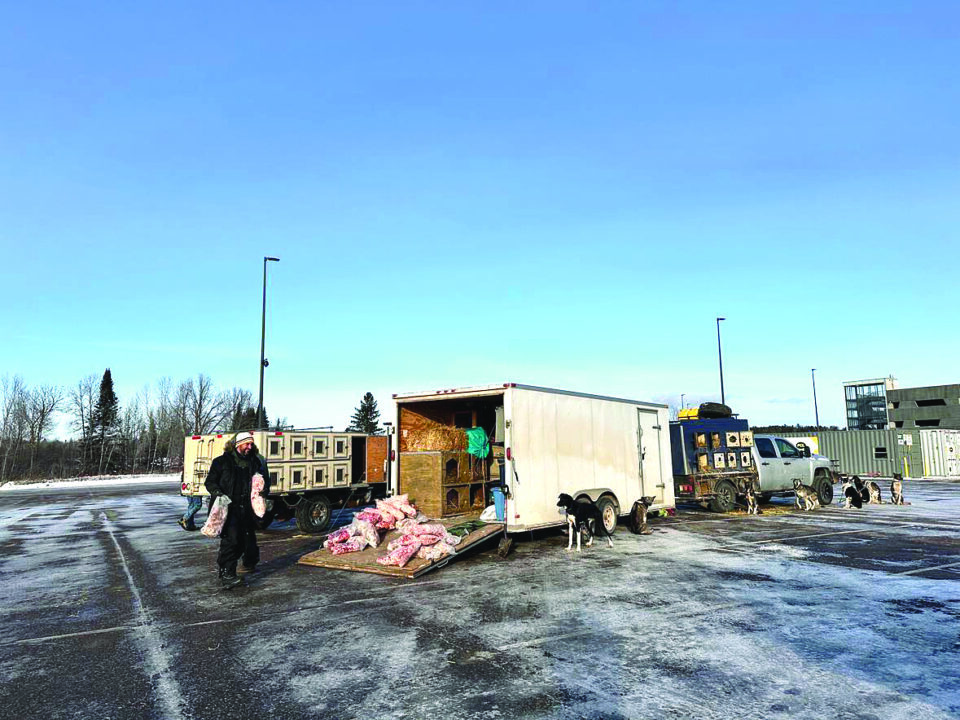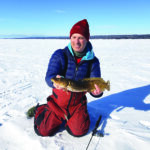One of the more complex pieces to plan for the Iditarod is what are called “drop bags,” which are re-supply bags sent ahead to each of the 18 checkpoints along the Iditarod trail for the dogs and musher.
In December, the Iditarod mailed me the drop bags to use, poly woven bags, labeled with each of the checkpoint names, three supplied for each checkpoint. There are just a couple rules to follow about packing these bags:
- Send at least 50 pounds to each checkpoint.
- No one bag can weigh more than 50 pounds.
Once I have gone through and used what I want to use out of each checkpoint bag during the race, I can send some things back to Anchorage in a “return bag,” but only the non-perishables, such as dog booties, sled runners, or musher clothing like dirty socks. Any dog food including meat or kibble stays at the checkpoint and will be fed to Alaska village dogs.
While it seems one could simply have an assembly line for preparing these drop bags, I found I needed a detailed spreadsheet because the plan for every checkpoint differs. The rest time at each checkpoint varies (sometimes I might rest three hours, sometimes six, one checkpoint requires a 24-hour rest). Sometimes, I might only stop long enough to pick up my checkpoint bag, empty its contents into my sled, and continue on, only to camp later alongside the trail—this requires a different set of supplies perhaps. The diet early in the race differs from the diet later in the race. In general, the average dog in the Iditarod burns 10,000 calories a day, but we can assume they are using more fat each day the race goes on. And finally, I can only presume that while I will start with 16 dogs, I will likely not finish with 16. But, how many to pack for later in the race? Keep packing for 16 just in case every dog exceeds my expectations and finishes?

Each checkpoint bag (for me) requires at minimum:
- 16 sets of booties (later in the race I go down to 14 sets and then 13, because if I finish with 13 dogs I will consider this to be a great victory).
- Several musher meals including Camp Chow, candy bars, a vacuum sealed Hungry Hippy taco, frozen bottles of Gatorade, hot chocolate mix, and chips.
- Dog supplements (vitamins and things like psyllium and probiotics proven to help their performance, not to be confused with banned performance enhancing drugs).
- Chopped up dog snacks portioned and bagged for each leg of the race.
- 16 pounds of kibble.
- Fat to add to each meal.
- Handwarmers.
- Special treats (if you are going to spend this kind of money to run this race, buy some great treats for the dogs—we have chicken thighs, bison snacks, pork loin, and more).
- Spare headlamp batteries—though I will mostly rely on large lithium ion rechargeable batteries, it is always good to have back-ups.
- Some checkpoint bags for longer layovers will have things like a musher change of clothing, change of runner plastic, and spare harnesses.
As Matt and I made the decision to send the team to Alaska early due to the Beargrease being cancelled and abysmal training conditions here, I started packing my drop bags. In the basement, I powdered and bundled dog booties grouped by size and in Ziplocs (soon it became clear that I did not buy enough booties and I needed to scale back how many booties I was packing in each Ziploc, i.e., plan on having fewer than 16 dogs later in the race). In the dining room our table was filled with musher snacks, Camp Chow, bottles of Prilosec and vitamin E for dogs, Ziplocs of probiotics, and handwarmers. Our 6-year-old complained that Mom was unfairly getting really good snacks that she was not. I tried to explain that I would need these calories to stay warm while out in the cold for 10 days while she was galivanting around Anchorage with Grandma and Daddy, and I’m sure getting her fair share of treats, but this didn’t go over well. Go figure.

In the garage, I had a full-scale butcher shop going, where I pre-thawed various types of meats, chopped them into snack size pieces, refroze them, then had to rechop them apart and bag the pieces, then put these bags into the drop bags. All of these various items eventually went into the drop bags in a flurry the day before Matt left with the dogs, but the drop bags are far from being finished, because we didn’t even have all the needed meat to finish the job (some was picked up on the way to Alaska). I will fly into Anchorage on February 12, we will spread all of this out in a parking lot somewhere, finish the job and bring it to a warehouse on the 14th where the Iditarod will weigh each bag, make sure I’ve done my job correctly, charge me approximately $0.70 a pound (there’s likely to be 1,000+ pounds), and fly each bag to the appropriate checkpoint where they will be ready for me when I come through with the team in early March.
As I write this, Matt and the team are on the way to Alaska but have stalled out mid-trip due to trailer problems in Fort Nelson, British Columbia. They will either ditch the trailer there and rent a U-Haul, or wait several days for the trailer to be repaired (difficult due to driver time constraints). Matt is planning to race the Yukon Quest 300 starting February 3, so follow along at: yukonquestalaska.com. The other Cook County musher that you may know, Anna Hennessy, is running the same race so it will surely be an interesting race to follow, and the terrain will be tough, going up and over several mountain summits and through very cold low valleys in early February. I’ll be here tracking on a computer screen, biting my lip.




